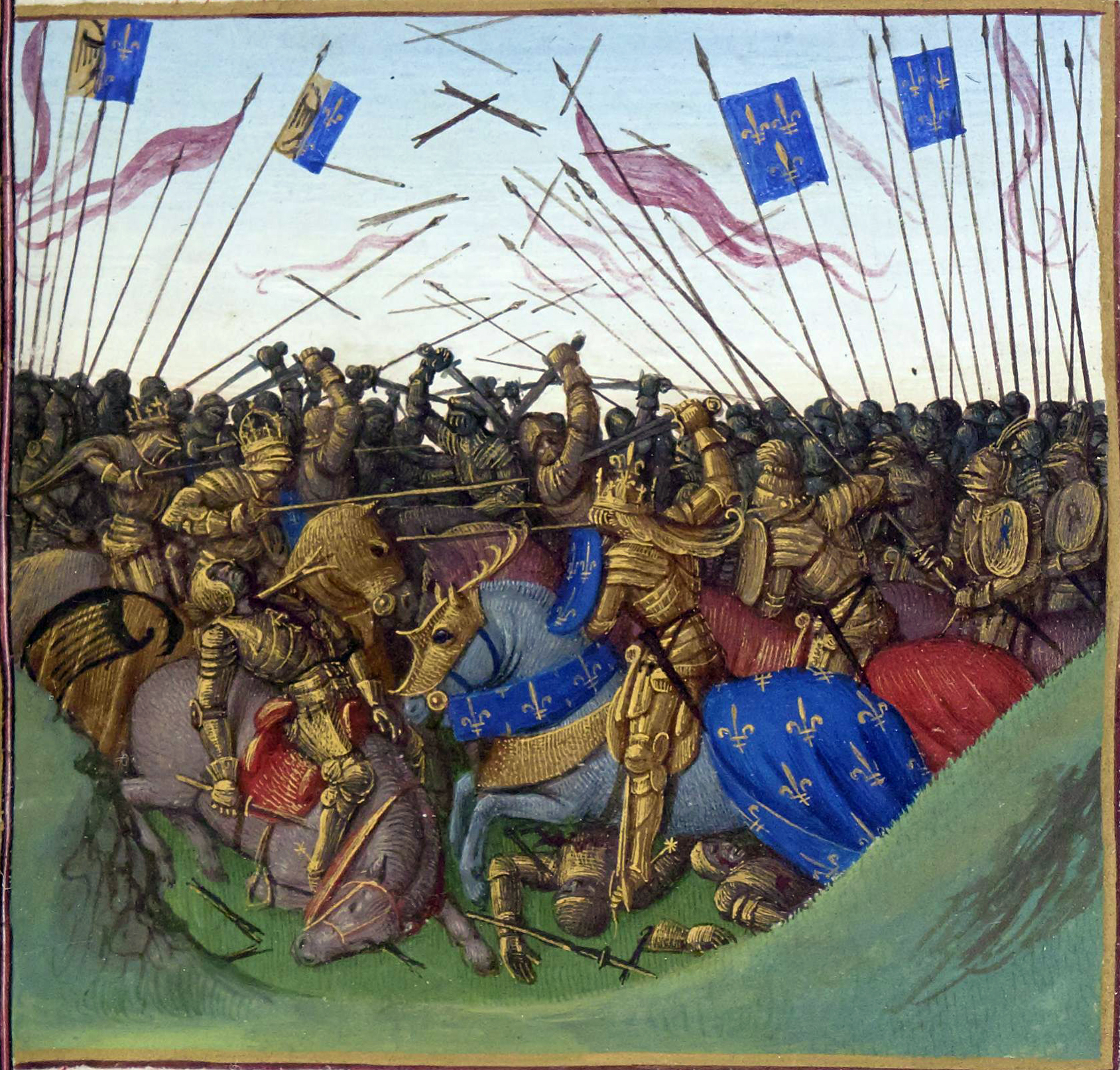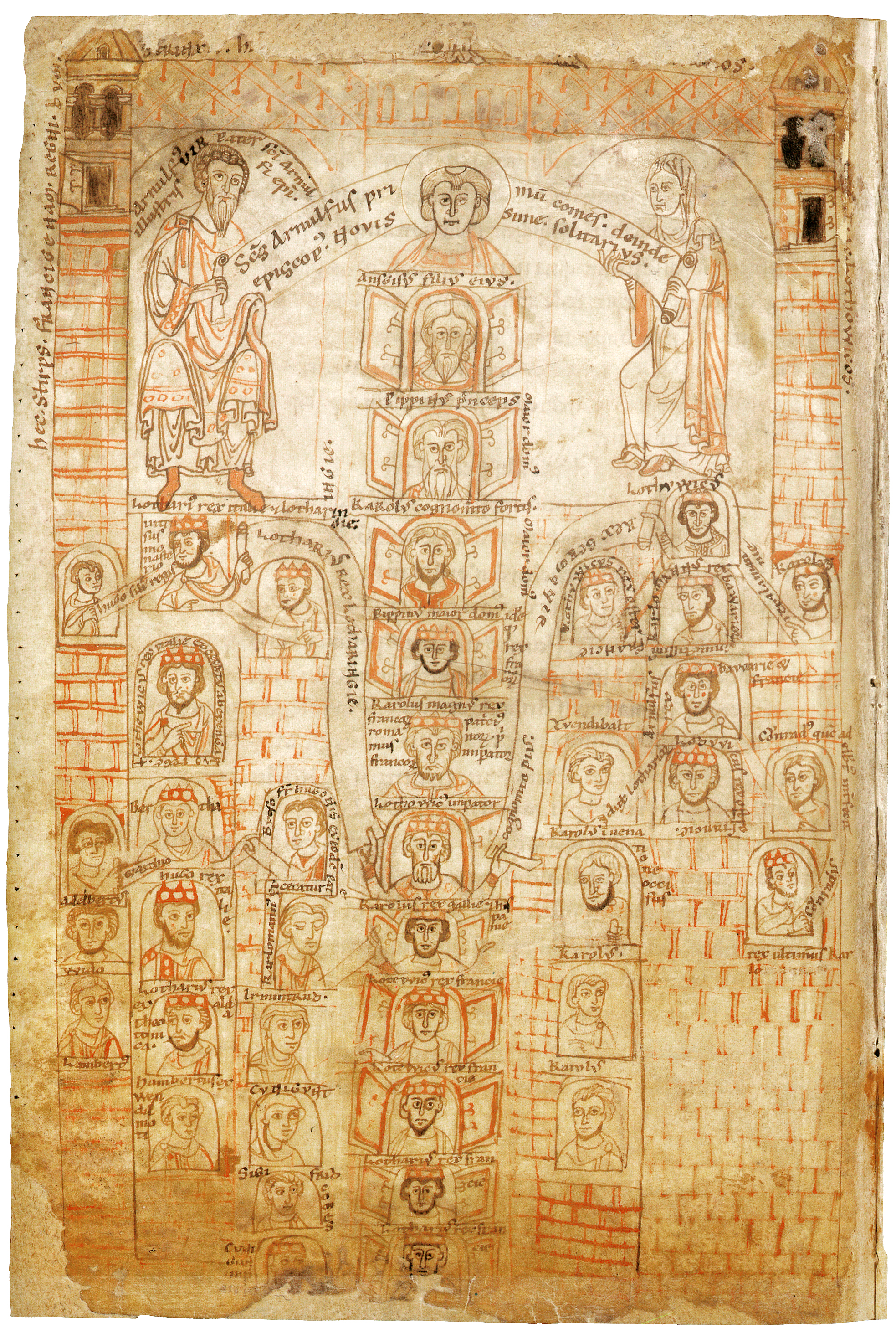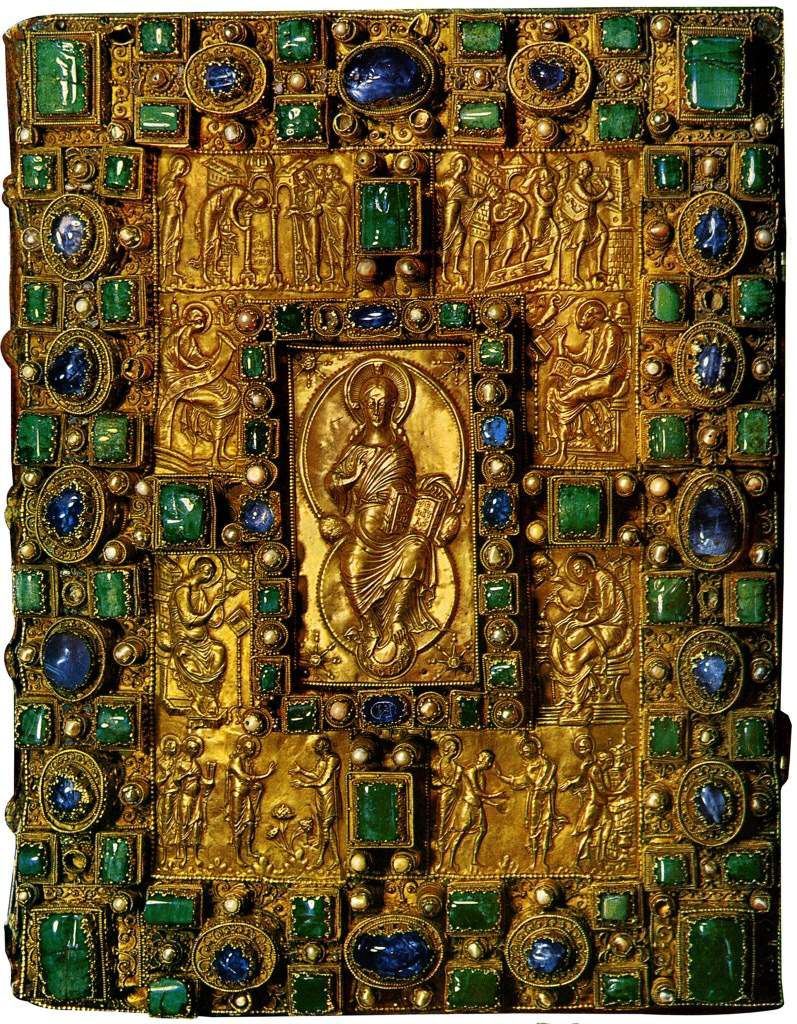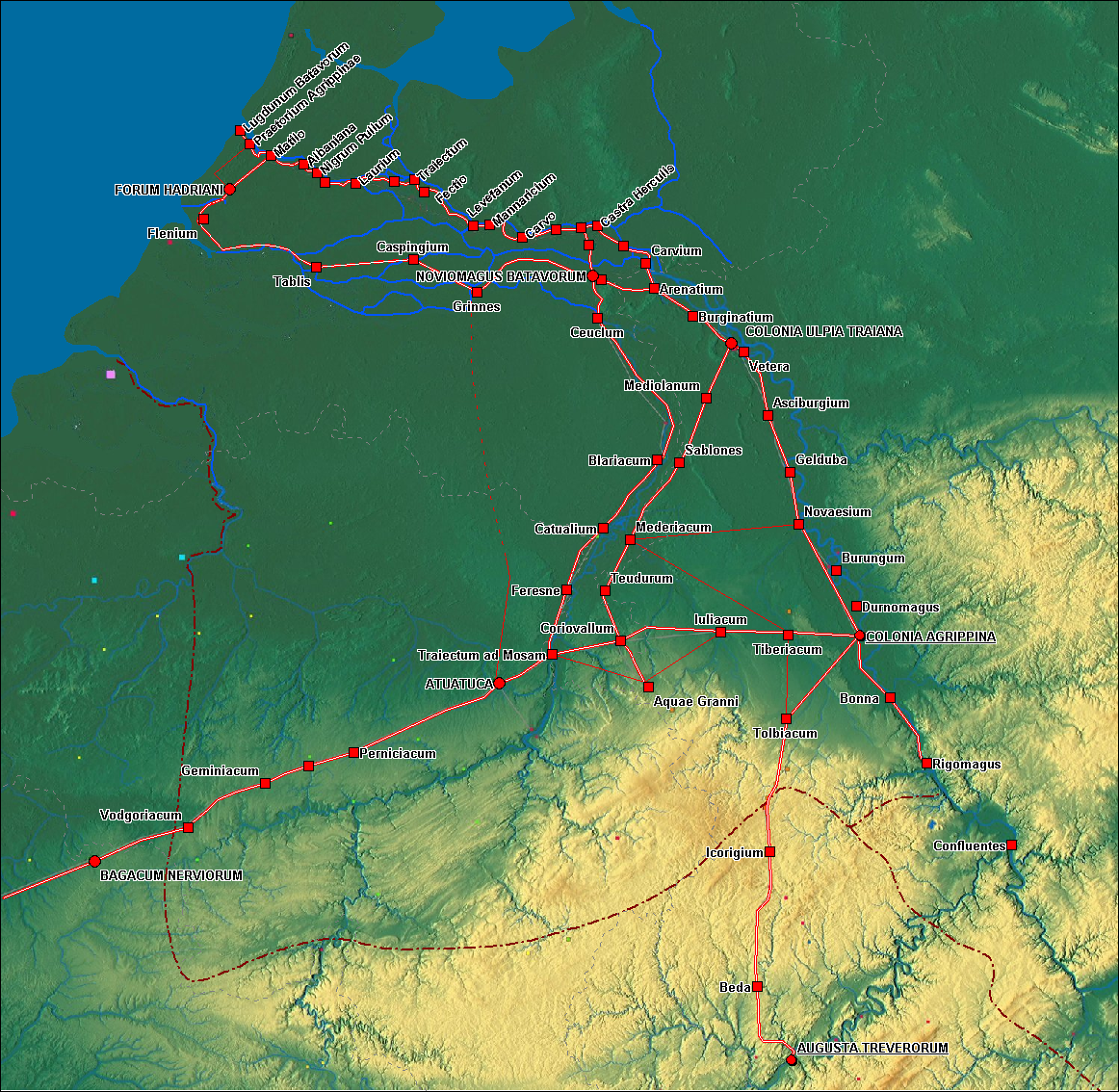|
Carolingian Empire
The Carolingian Empire (800–887) was a Franks, Frankish-dominated empire in Western and Central Europe during the Early Middle Ages. It was ruled by the Carolingian dynasty, which had ruled as List of Frankish kings, kings of the Franks since 751 and as kings of the Lombards in Italy from 774. In 800, Pope Leo III crowned the Frankish king Charlemagne as Roman emperor in return for political protection, disregarding the universalist claims of the weakened Byzantine Empire. The Carolingian Empire is sometimes considered the first phase in the history of the Holy Roman Empire. After a Carolingian civil war, civil war from 840 to 843 following the death of Emperor Louis the Pious, the empire was divided into autonomous kingdoms, with one king still recognised as emperor, but with little authority outside his own kingdom. The unity of the empire and the hereditary right of the Carolingians continued to be acknowledged. In 884, Charles the Fat reunited all the Carolingian kingdoms f ... [...More Info...] [...Related Items...] OR: [Wikipedia] [Google] [Baidu] |
Middle Ages
In the history of Europe, the Middle Ages or medieval period lasted approximately from the 5th to the late 15th centuries, similarly to the post-classical period of global history. It began with the fall of the Western Roman Empire and transitioned into the Renaissance and the Age of Discovery. The Middle Ages is the middle period of the three traditional divisions of Western history: classical antiquity, the medieval period, and the modern period. The medieval period is itself subdivided into the Early, High, and Late Middle Ages. Population decline, counterurbanisation, the collapse of centralised authority, invasions, and mass migrations of tribes, which had begun in late antiquity, continued into the Early Middle Ages. The large-scale movements of the Migration Period, including various Germanic peoples, formed new kingdoms in what remained of the Western Roman Empire. In the 7th century, North Africa and the Middle East—once part of the Byzantine Empire� ... [...More Info...] [...Related Items...] OR: [Wikipedia] [Google] [Baidu] |
Slavic Languages
The Slavic languages, also known as the Slavonic languages, are Indo-European languages spoken primarily by the Slavs, Slavic peoples and their descendants. They are thought to descend from a proto-language called Proto-Slavic language, Proto-Slavic, spoken during the Early Middle Ages, which in turn is thought to have descended from the earlier Proto-Balto-Slavic language, linking the Slavic languages to the Baltic languages in a Balto-Slavic languages, Balto-Slavic group within the Indo-European family. The current geographical distribution of natively spoken Slavic languages includes the Balkans, Central and Eastern Europe, and all the way from Western Siberia to the Russian Far East. Furthermore, the diasporas of many Slavic peoples have established isolated minorities of speakers of their languages all over the world. The number of speakers of all Slavic languages together was estimated to be 315 million at the turn of the twenty-first century. It is the largest and most d ... [...More Info...] [...Related Items...] OR: [Wikipedia] [Google] [Baidu] |
Carolingian Civil War
The Carolingian civil war was a violent crisis over the succession to the Carolingian Empire following the death of Emperor Louis the Pious in June 840 and lasting until the Treaty of Verdun in August 843. Louis's eldest son, the emperor Lothar I, laid claim to an undivided empire, while his younger brothers Louis the German and Charles the Bald sought large kingdoms of their own on the basis of previous divisions planned by the late emperor. Their nephew, Pippin II, laid claim to Aquitaine. After Louis the Pious's death, Lothar moved immediately to disregard the division of the empire and secure for himself his father's imperial position. He reached out to Pippin in Aquitaine for support against Charles. Not content with Bavaria alone, Louis the German occupied the Rhineland laying claim to all of Germania. The first military move of the budding civil war was Lothar's campaign that forced Louis from the Rhineland in August. It increased Lothar's prestige in the east, but ended in ... [...More Info...] [...Related Items...] OR: [Wikipedia] [Google] [Baidu] |
Holy Roman Empire
The Holy Roman Empire, also known as the Holy Roman Empire of the German Nation after 1512, was a polity in Central and Western Europe, usually headed by the Holy Roman Emperor. It developed in the Early Middle Ages, and lasted for a millennium until its Dissolution of the Holy Roman Empire, dissolution in 1806 during the Napoleonic Wars. For most of its history the Empire comprised the entirety of the modern countries of Germany, Czechia, Austria, the Netherlands, Belgium, Switzerland, Slovenia, and Luxembourg, most of north-central Italy, and large parts of modern-day east France and west Poland. On 25 December 800, Pope Leo III crowned the Frankish king Charlemagne Roman emperor, reviving the title more than three centuries after the fall of the Western Roman Empire in 476. The title lapsed in 924, but was revived in 962 when Otto I, OttoI was crowned emperor by Pope John XII, as Charlemagne's and the Carolingian Empire's successor. From 962 until the 12th century, the empire ... [...More Info...] [...Related Items...] OR: [Wikipedia] [Google] [Baidu] |
Byzantine Empire
The Byzantine Empire, also known as the Eastern Roman Empire, was the continuation of the Roman Empire centred on Constantinople during late antiquity and the Middle Ages. Having survived History of the Roman Empire, the events that caused the fall of the Western Roman Empire in the 5th centuryAD, it endured until the fall of Constantinople to the Ottoman Empire in 1453. The term 'Byzantine Empire' was coined only after its demise; its citizens used the term 'Roman Empire' and called themselves 'Romans'. During the early centuries of the Roman Empire, the western provinces were Romanization (cultural), Latinised, but the eastern parts kept their Hellenistic culture. Constantine the Great, Constantine I () legalised Christianity and moved the capital to Constantinople. Theodosius I, Theodosius I () made Christianity the state religion and Greek gradually replaced Latin for official use. The empire adopted a defensive strategy and, throughout its remaining history, expe ... [...More Info...] [...Related Items...] OR: [Wikipedia] [Google] [Baidu] |
Pope Leo III
Pope Leo III (; died 12 June 816) was bishop of Rome and ruler of the Papal States from 26 December 795 to his death on 12 June 816. Protected by Charlemagne from the supporters of his predecessor, Adrian I, Leo subsequently strengthened Charlemagne's position by crowning him emperor. The coronation was not approved by most people in Constantinople, although the Byzantines, occupied with their own defenses, were in no position to offer much opposition to it. Rise According to the ''Liber Pontificalis'', Leo was "of the Roman nation, the son of Atzuppius" (''natione romanus ex patre Atzuppio''). The '' Chronicon Anianense'' says, more specifically, that he was "born in Rome to Asupius and Elizabeth" (''natus rome ex patre asupio matre helisabeth''). Usually considered to be of Greek origin, his father's name may suggest an Arab background.T. F. X. Noble (1985), The Declining Knowledge of Greek in Eighth- and Ninth-Century Papal Rome", ''Byzantinische Zeitschrift'', 78(1): 59. An ... [...More Info...] [...Related Items...] OR: [Wikipedia] [Google] [Baidu] |
Kings Of The Lombards
The kings of the Lombards or ''reges Langobardorum'' (singular ''rex Langobardorum'') were the monarchs of the Lombard people from the early 6th century until the Lombardic identity became lost in the 9th and 10th centuries. After 774, the kings were not Lombards, but Franks. From the 12th century, the votive crown and reliquary known as the Iron Crown (''Corona Ferrea'') retrospectively became a symbol of their rule, though it was never used by Lombard kings. The primary sources for the Lombard kings before the Frankish conquest are the anonymous 7th-century '' Origo Gentis Langobardorum'' and the 8th-century ''Historia Langobardorum'' of Paul the Deacon. The earliest kings (the pre-Lethings) listed in the ''Origo'' are almost certainly legendary. They purportedly reigned during the Migration Period. The first ruler attested independently of Lombard tradition is Tato. Early rulers Legendary rulers * Shava *Ybor and Agio, brothers, together with their mother Gambara, who led ... [...More Info...] [...Related Items...] OR: [Wikipedia] [Google] [Baidu] |
List Of Frankish Kings
The Franks, Germanic peoples that invaded the Western Roman Empire in the 5th century, were first led by individuals called dux, dukes and monarch, reguli. The earliest group of Franks that rose to prominence was the Salian Franks, Salian Merovingian dynasty, Merovingians, who conquered most of Roman Gaul, as well as the Gaulish territory of the Visigothic Kingdom, following the Battle of Vouillé in 507 AD. The sons of Clovis I, the first King of the Franks, conquered the Kingdom of the Burgundians, Burgundian and the Alamannia, Alamanni Kingdoms. They acquired Provence, and went on to make the peoples of the Bavarii and Thuringii their clients. The Merovingians were later replaced by the new Carolingian dynasty in the 8th century. By the late 10th century, the Carolingians themselves had been replaced throughout much of their realm by other dynasties. A timeline of Frankish rulers has been difficult to trace since the realm, according to old Germanic practice, was frequently ... [...More Info...] [...Related Items...] OR: [Wikipedia] [Google] [Baidu] |
Carolingian Dynasty
The Carolingian dynasty ( ; known variously as the Carlovingians, Carolingus, Carolings, Karolinger or Karlings) was a Franks, Frankish noble family named after Charles Martel and his grandson Charlemagne, descendants of the Pippinids, Arnulfing and Pippinid clans of the 7th century AD. The dynasty consolidated its power in the 8th century, eventually making the offices of mayor of the palace and ''dux et princeps Francorum'' hereditary, and becoming the ''de facto'' rulers of the Franks as the real powers behind the Merovingian throne. In 751 the Merovingian dynasty which had ruled the Franks was overthrown with the consent of the Papacy and the aristocracy, and Pepin the Short, son of Martel, was crowned King of the Franks. The Carolingian dynasty reached its peak in 800 with the crowning of Charlemagne as the first Holy Roman Emperor, Emperor of the Romans in the West in over three centuries. Nearly every monarch of France from Charlemagne's son Louis the Pious until the pen ... [...More Info...] [...Related Items...] OR: [Wikipedia] [Google] [Baidu] |
Early Middle Ages
The Early Middle Ages (or early medieval period), sometimes controversially referred to as the Dark Ages (historiography), Dark Ages, is typically regarded by historians as lasting from the late 5th to the 10th century. They marked the start of the Middle Ages of History of Europe, European history, following the decline of the Roman Empire, decline of the Western Roman Empire, and preceding the High Middle Ages ( 11th to 14th centuries). The alternative term ''Late antiquity#Terminology, late antiquity'', for the early part of the period, emphasizes elements of continuity with the Roman Empire, while ''Early Middle Ages'' is used to emphasize developments characteristic of the earlier medieval period. The period saw a continuation of trends evident since late classical antiquity, including population decline, especially in urban centres, a decline of trade, Medieval Warm Period, a small rise in average temperatures in the North Atlantic region and Migration Period, increased m ... [...More Info...] [...Related Items...] OR: [Wikipedia] [Google] [Baidu] |
Franks
file:Frankish arms.JPG, Aristocratic Frankish burial items from the Merovingian dynasty The Franks ( or ; ; ) were originally a group of Germanic peoples who lived near the Rhine river, Rhine-river military border of Germania Inferior, which was the most northerly province of the Roman Empire in continental Europe. These Frankish tribes lived for centuries under varying degrees of Roman hegemony and influence, but after the collapse of Roman institutions in western Europe they took control of a large empire including areas which had been ruled by Rome, and what it meant to be a Frank began to evolve. Once they were deeply established in Gaul, the Franks became a multilingual, Catholic Christian people, who subsequently came to rule over several other post-Roman kingdoms both inside and outside the old empire. In a broader sense much of the population of western Europe could eventually described as Franks in some contexts. The term "Frank" itself first appeared in the third cent ... [...More Info...] [...Related Items...] OR: [Wikipedia] [Google] [Baidu] |
Holy Roman Emperor
The Holy Roman Emperor, originally and officially the Emperor of the Romans (other), Emperor of the Romans (; ) during the Middle Ages, and also known as the Roman-German Emperor since the early modern period (; ), was the ruler and head of state of the Holy Roman Empire. The title was held in conjunction with the title of King of Italy#Kingdom of Italy (781–962), King of Italy (''Rex Italiae'') from the 8th to the 16th century, and, almost without interruption, with the title of King of Germany (''Rex Teutonicorum'', ) throughout the 12th to 18th centuries. The Holy Roman Emperor title provided the highest prestige among Christianity in the Middle Ages, medieval Catholic monarchs, because the empire was considered by the Catholic Church to be Translatio imperii, the only successor of the Roman Empire during the Middle Ages and the early modern period. Thus, in theory and diplomacy, the emperors were considered first among equalsamong other Catholic monarchs across E ... [...More Info...] [...Related Items...] OR: [Wikipedia] [Google] [Baidu] |





